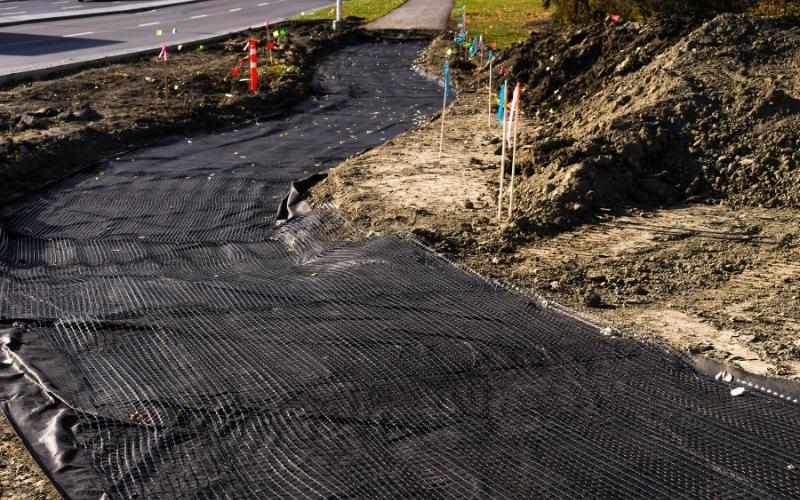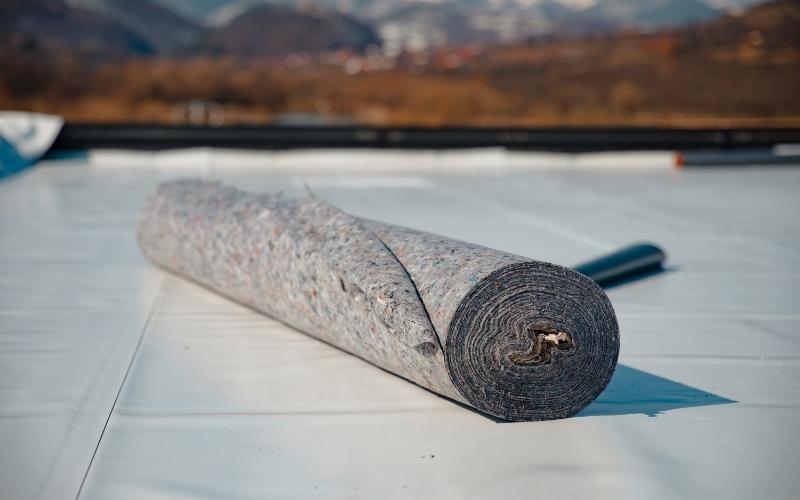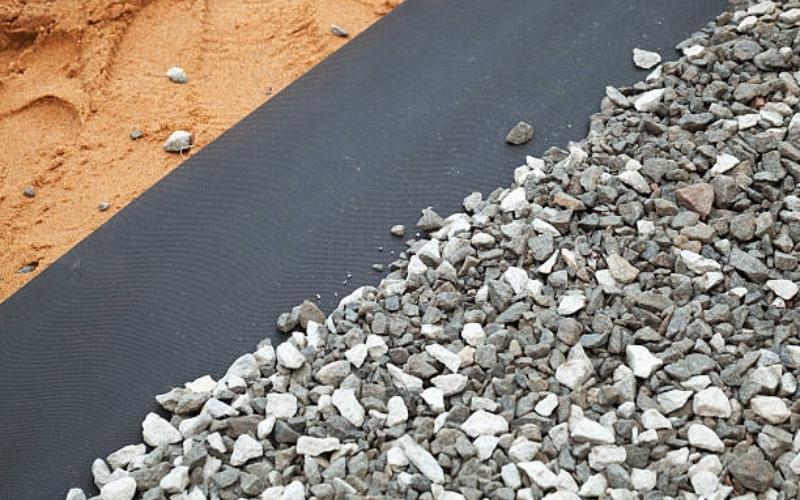Geotextiles, a robust membrane fabric that is used to protect soil from damage and reinforce it, are relatively thin and durable. To improve soil structure, geotextiles are widely used in the construction of roadways, particularly to fill in spaces between the roads.
Geotextiles are an integral component in building roads. Thus, the importance of geotextile in road construction is immense.
Inception of Geotextile
A variety of cutting-edge solutions have been created during the last 25 years to address problems with soil in the building industry. These have been designed to be more useful than substituting suitable soil or avoiding it with deep foundations.
Naturally, motor graders are still used extensively in road construction and maintenance; but, new “tech” is always being developed, making these processes simpler, faster, and more affordable.
Importance of Geotextile in Road Construction

As you know, large sheets known as geotextiles are tied tightly and help to preserve the soil on rainy days which narrates the importance of geotextiles in road construction. In the construction of roads, it is mostly utilized for filtering and separation. It protects against the movement of sand and tiny gravel aggregates which is the beginning of the list of importance of geotextile in road construction.
To improve the soil structure, geotextiles are frequently used to fill in gaps between the roads. Low-grade soil benefits from geotextile’s use, and it also makes building in challenging terrain easier. Geotextile is the ideal material for use in infrastructure projects including building dams, highways, and other structures.
Geotextiles’ ability to absorb substances allows liquids to pass through them. Geotextiles protect soil from wind and water erosion when utilized in the infrastructure of structures, which strengthens structural stability. It increases & substantiality and decreases the wind & water erosion process. It helps to stop soil erosion while allowing water to run off. Thin bits of soil are used to tie together synthetic or natural fibers to create geotextiles.
It improves soil properties like load back, friction or movement restraint, and changes to the bearing failure plane.
Categories of Geotextile
Polyester-based textiles are used to create synthetic polymers called geotextiles. Geotextiles are highly useful tools for enhancing road quality. The categories are as follows:
- Geotextile of Woven Fabrics
- Non-woven Fabrics
- Knitted Fabrics
Application of Woven Textiles
These geotextile textiles are made of parallel strands that are connected, much like burlap. Different weave patterns have an impact on a fabric’s strength and permeability. Woven geotextiles in general do not permit water to flow as easily as non-woven geotextiles. As a result of the fabric’s restriction on soil particles’ freedom of movement, infiltration is aided.
As a result, highways made of woven geotextile materials use less energy and last longer.
Application of Nonwoven Textile
Non-woven geotextile can be produced using a variety of techniques and can be made to resemble felt materials. Compared to its woven predecessor, the non-woven material is more likely to stretch. This permits water to flow along the fabric’s plane, which is crucial for employing geotextile to divert water away from the ground or a road.
Knitted Geotextile
These are produced by joining several yarn loops. The knitting process is combined with other techniques, such as weaving, to create these geosynthetic materials.
Function of Geotextile
- To upgrade airport roads’ paved and unpaved roads
- About dumps and stone base courses
- Filling small geotextile pieces for land breaches
- Parking lots and curb areas lie below the sand drainage layer and sidewalks.
- To improve the greenery and recreational spaces photographed beneath retaining wall structures
- Improved soil capping due to pipe trenches and reinforcement
Geotextile Separation
Geotextiles are utilized in construction primarily for this reason. When a geotextile is positioned between two separate soils, it will stop soil strata from mixing when moisture is present. The necessary soil properties can be preserved in this way. The geotextile maintains the foundation material’s strength and drainage capabilities by isolating the fine subgrade soil from the aggregates, as is the case with highways.
To prevent soil contamination and to permit water flow without jeopardizing structural integrity, these geotextiles have unique thickness and permeability features. Geotextiles are used in a variety of contexts, such as:
- Between stone base courses and landfills
- Paved and unpaved roads’ subgrade and base
- Railroads between subgrade
- Between sand drainage layers and geomembranes
Geotextile Filtration
Filtration Water can move in both directions because of the properties of geotextiles. These geotextiles are used to stop fine aggregates from moving between soil layers. They can be woven or nonwoven. Geotextiles can also encourage the lateral flow of drainage water, dissipating the kinetic energy of the capillary rise of groundwater, depending on the porosity and permeability of the material.
To address drainage issues near residences, along highways, and along curbs, geotextiles can be utilized in both vertical and horizontal applications.
Reinforcement Application
The strength and durability of the subsurface soil beneath a road can be improved by using geotextile materials. For example, the fabric and sand can be utilized to disperse the load uniformly. This lessens the rutting process and ensures that no unexpected grooves appear on the road.
Geotextiles Sealing
To make a geotextile fabric impermeable and thus capable of limiting the flow of liquids in both directions, it can be impregnated with asphalt or other mixes. A non-woven cloth is necessary for this. Impermeable geotextiles can be used to stop evaporation or contamination from polluting soil or groundwater, as well as to stop the loss of drinkable water.
Pros of Geotextile
- Cost-saving material
- Increase construction speed
- Achieved supplementing
- Improved quality
- High in strength
- UV resistance
- Rot resistance
- Resists biological degradation
- Chemically inert
- Increases the life of the road
Conclusion
Geotextile, a recently developed field in civil engineering and other sectors, has a wide range of possible uses around the world. Geotextile is a fantastic option to create because it has a global demand, as we are aware of Bangladesh’s desire to diversify its product line.
As geotextiles provide several advantages, the importance of geotextiles in road construction is undeniable.



